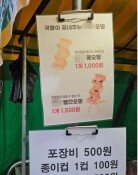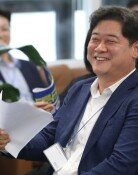Beyond nuclear deterrence: the rise of semiconductor power
Beyond nuclear deterrence: the rise of semiconductor power
Posted October. 04, 2024 07:54,
Updated October. 04, 2024 07:54
A small island nation with a population of 23 million, Taiwan once graced the cover of The Economist, a British economic weekly. The issue, dated May 1, 2021, bore the title "The Most Dangerous Place on Earth."
At the time, China’s threats toward Taiwan, aiming to reclaim the island, were intensifying. It was also a period when the world was grappling with a global semiconductor supply shortage following the pandemic. The Economist emphasized that “Taiwan is the heart of the semiconductor industry” and noted that “TSMC, the world’s most valuable chipmaker, produces 84% of the most advanced chips.” The article warned that if Taiwan were dragged into war, the crisis could ripple across the region and the global economy.
TSMC was manufacturing and supplying semiconductors for most of the major U.S. tech companies at the time, including Apple, Qualcomm, Intel, Nvidia, and Broadcom. It wouldn’t have been an exaggeration to call it "America’s semiconductor factory." Despite repeated warnings from China, the U.S. actively engaged in safeguarding Taiwan’s independence. Joint military exercises were made public, and key figures such as House Speaker Nancy Pelosi made high-profile visits to the island.
Last week, at the Korea-U.S. Industrial Cooperation Conference, hosted by the Korea Chamber of Commerce and Industry and the Korea-America Association, I heard a noteworthy remark. Kwon Seok-jun, a professor of chemical engineering at Sungkyunkwan University, while analyzing the industrial impact of the U.S. presidential election, said, "By 2030, America’s dependence on semiconductors from East Asia, including Taiwan, will have decreased to a certain level, which may reduce the U.S. involvement in geopolitical risks like the Taiwan issue."
This assumption is based on the fact that by 2030, the semiconductor fabs being built by South Korea and Taiwan in the U.S. will likely be operating at stable production levels. Since the semiconductor supply crisis, the U.S. has continuously tried to localize its semiconductor supply chain. Despite the recent challenges faced by Intel and the delays in fab construction by Samsung and TSMC, the U.S. government's ultimate resolve remains unwavering.
While Professor Kwon’s comments specifically targeted Taiwan, the implications are just as relevant to South Korea, another frontline in the U.S.-China conflict. Beyond a long-standing military alliance with the U.S., South Korea now represents an economic security alliance centered around advanced strategic industries. However, if the “America First” sentiment grows strong within the U.S. and national interest takes precedence over global leadership, this could create both geopolitical and economic uncertainties for South Korea.
Just as Taiwan strives to protect itself from China's threats as America's semiconductor hub, South Korea's semiconductor industry holds significance far beyond being just another sector. One key difference between South Korea and Taiwan is that, despite various political conflicts, Taiwan’s government, legislature, and public have consistently stood united on this issue. Taiwan’s version of the CHIPS Act, which guarantees a 25% tax credit for R&D until 2029, passed swiftly through its legislature without any partisan disagreement. The government also took the lead in building power plants and water reclamation facilities in regions where TSMC plants were being constructed.
In the same way that possessing nuclear weapons serves as a deterrent against provocations, the growing interdependence of industries in the modern era will increase the deterrent power of advanced industries. When South Korean semiconductors become indispensable to major countries, including the U.S., we will gain leverage in navigating the tensions between global powers.
Headline News
- Joint investigation headquarters asks Yoon to appear at the investigation office
- KDIC colonel: Cable ties and hoods to control NEC staff were prepared
- Results of real estate development diverged by accessibility to Gangnam
- New budget proposal reflecting Trump’s demand rejected
- Son Heung-min scores winning corner kick







